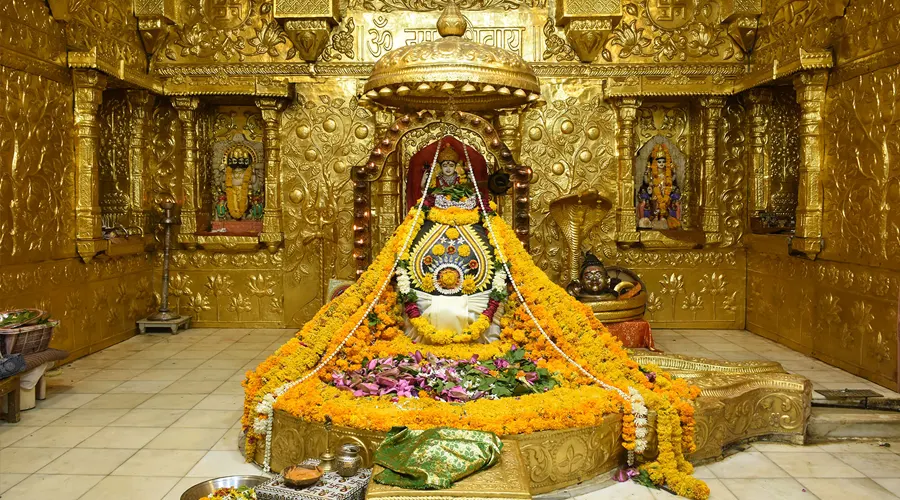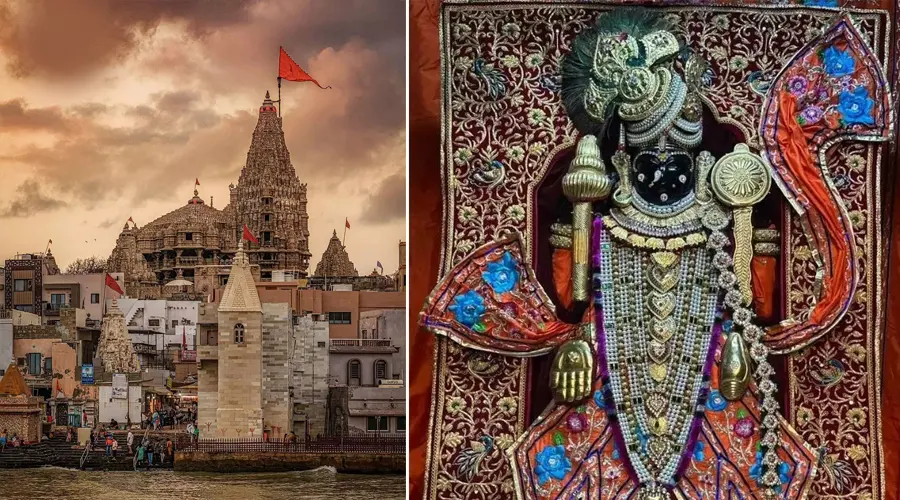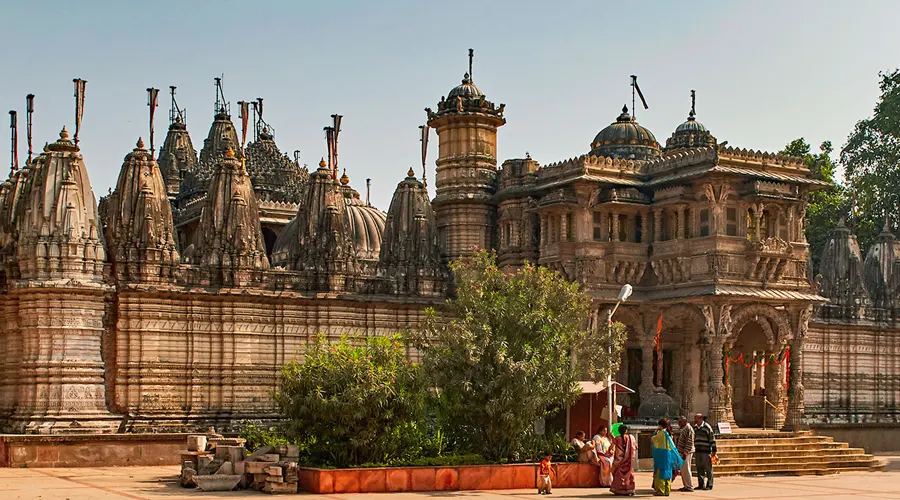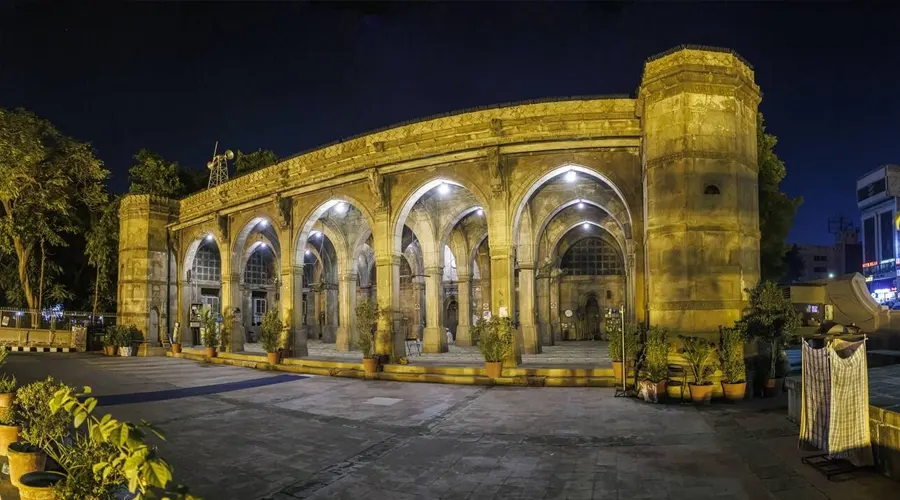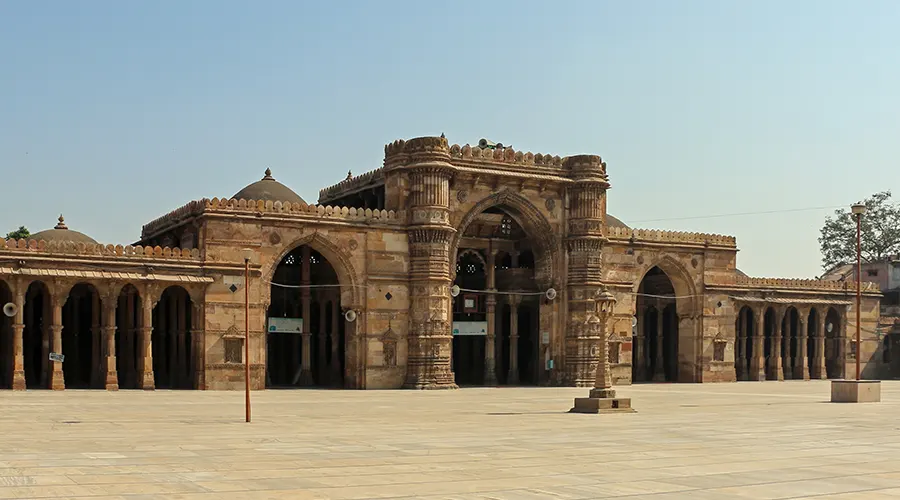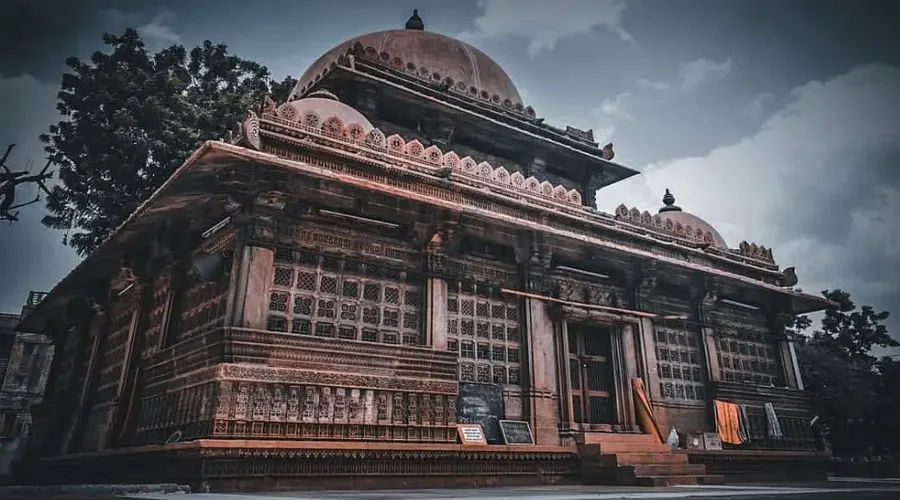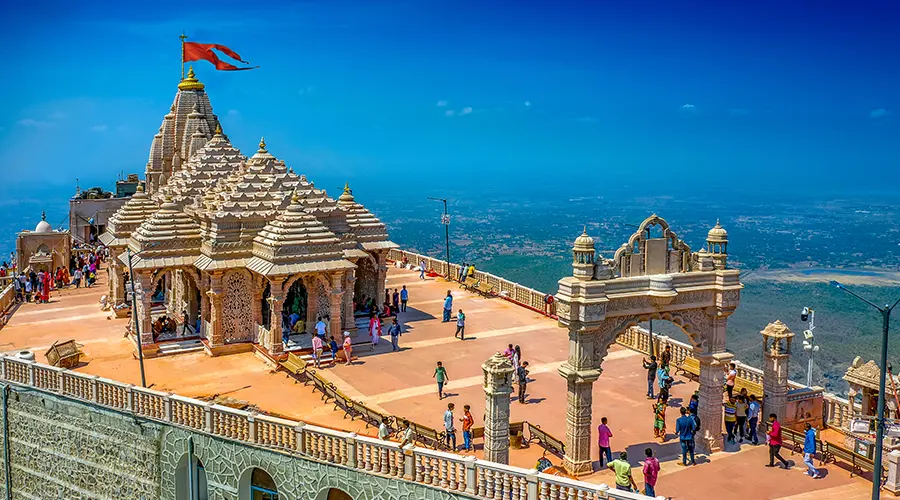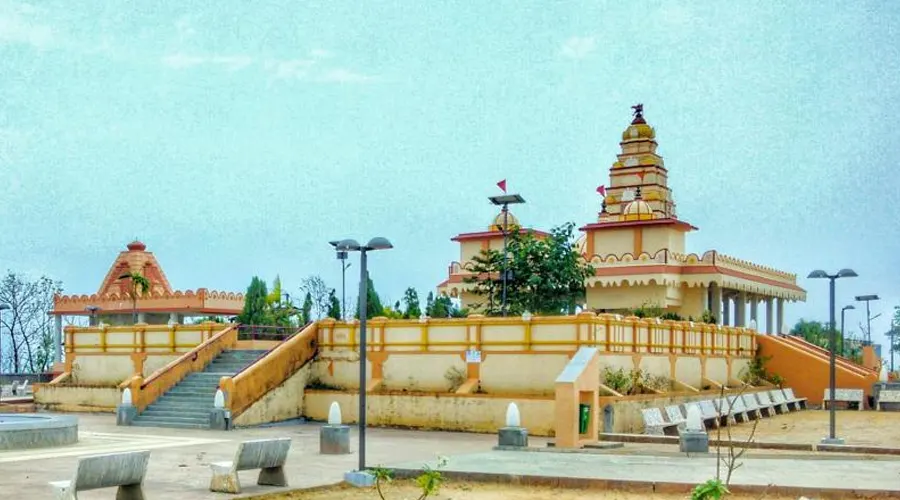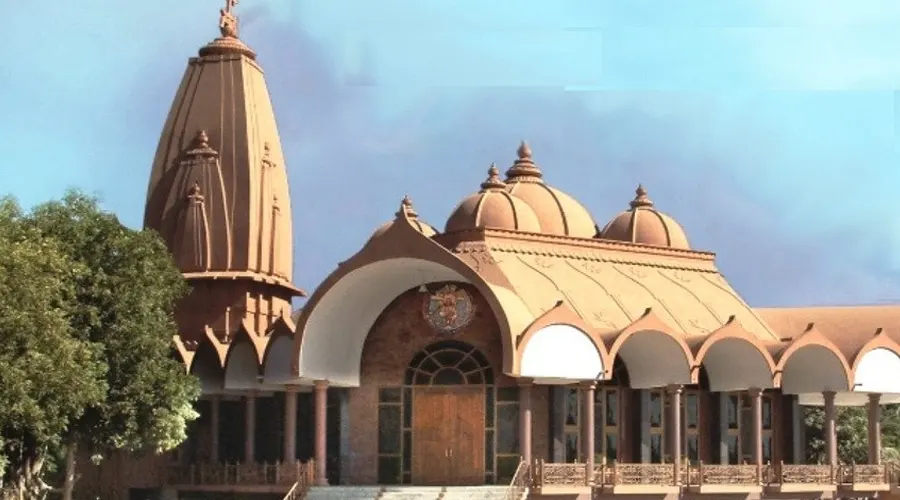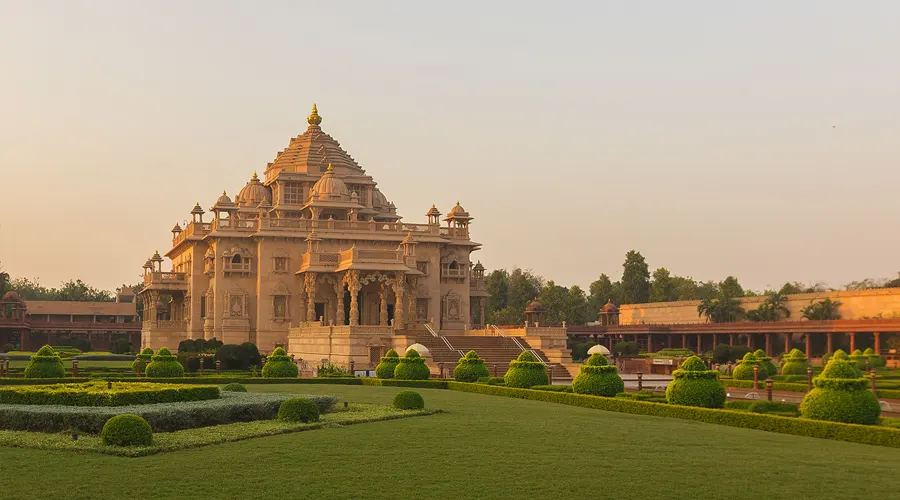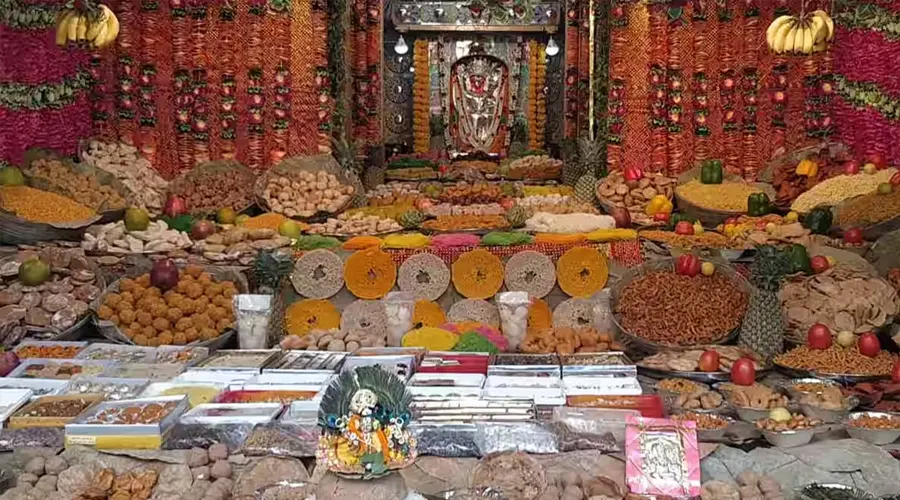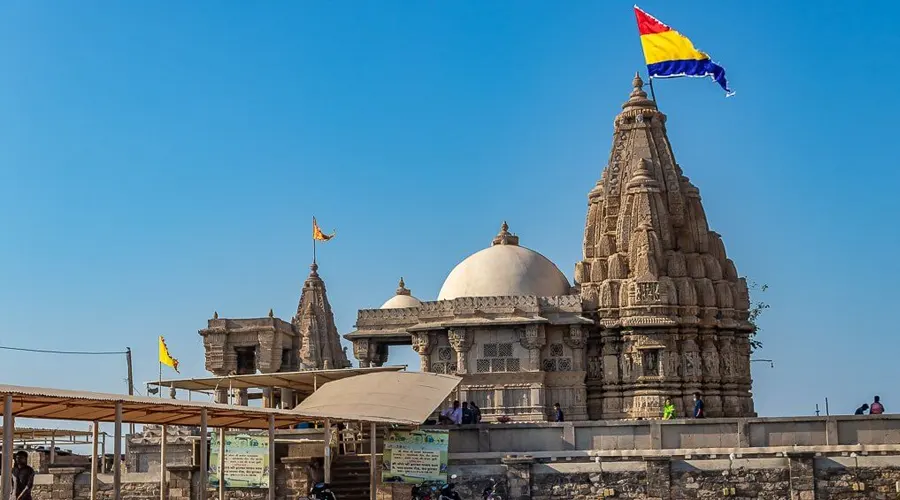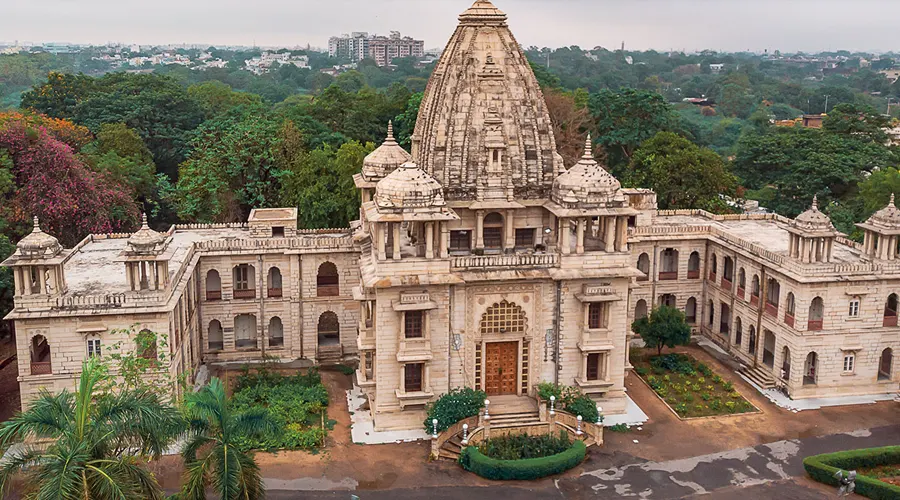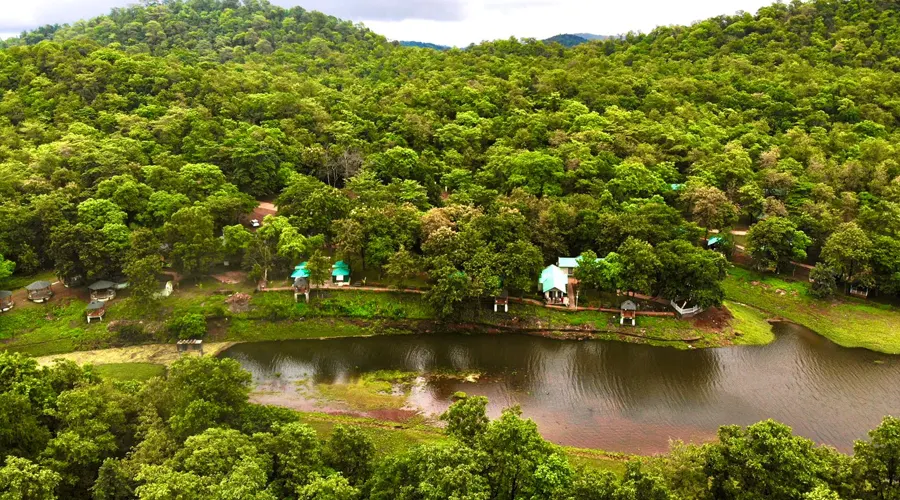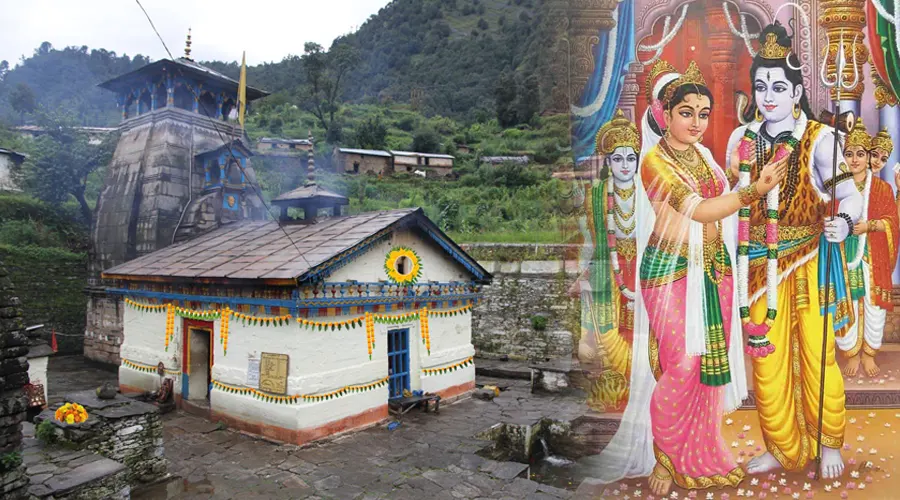Shree Somnath Jyotirlinga Temple
Shree Somnath is first among the twelve Aadi Jyotirlingas of India. It has a strategic location on the western coast of India. The temple is located on the ancient Triveni Sangam or the confluence of three rivers - Kapila, Hiran, and Saraswati.
Ancient Indian traditions maintain a close relationship of Somnath with the release of Chandra (Moon God) from the curse of his father-in-law Daksha Prajapati. Moon was married to the Twenty-Seven daughters of Daksha. However, he favored Rohini and neglected other queens.
The aggrieved Daksha cursed the Moon and the Moon lost the power of light. With the advice of Prajapita Brahma, Moon arrived at the Prabhas Teerth and worshipped Bhagavan Shiva. Pleased with the great penance and devotion of the Moon, Bhagavan Shiva blessed him and relieved him from the curse of darkness.
Pauranic traditions maintain that Moon had built a golden temple, followed by a silver temple by Ravana, Bhagavan Shree Krishna is believed to have built Somnath temple with Sandalwood.
Other spots in the temple are Shri Kapardi Vinayak and Shri Hanuman Temple in addition to Vallabhghat. Vallabhghat is a beautiful sunset point. The temple is illuminated every evening. Similarly, the Sound & Light Show “Jay Somnath” is also displayed every night from 8.00 to 9.00, which allows the pilgrims an ethereal experience in the backdrop of the grand Somnath temple and the holy wave sounds of the Ocean.
History of Shree Somnath Jyotirlinga Temple
It’s said that Somraj (the moon god) first built a temple in Somnath, made of gold; this was rebuilt by Ravana in silver, by Krishna in wood, and by Bhimdev in stone. The current serene, symmetrical structure was built to traditional designs on the original coastal site: it’s painted a creamy colour and boasts a little fine sculpture. The large, black Shiva lingam at its heart is one of the 12 most sacred Shiva shrines, known as jyotirlinga.
A description of the temple by Al-Biruni, an Arab traveler, was so glowing that it prompted a visit in 1024 by a most unwelcome tourist – the legendary looter Mahmud of Ghazni from Afghanistan. At that time, the temple was so wealthy that it had 300 musicians, 500 dancing girls, and even 300 barbers. Mahmud of Ghazni took the town and temple after a two-day battle in which it’s said 70,000 defenders died.
Having stripped the temple of its fabulous wealth, Mahmud destroyed it. So began a pattern of destruction and rebuilding that continued for centuries. The temple was again razed in 1297, 1394, and finally in 1706 by Aurangzeb, the Mughal ruler. After that, the temple wasn’t rebuilt until 1950.
Legend of Somnath Jyortilinga
The literal meaning of 'Soma' is Moon God, and 'Somnath' is the protector of the Moon God. Legend has it that he was married to 27 of King Daksha's daughters, but he loved and was partial to only one of them. This upset the other girls who took the matter to their father.
An infuriated Daksha put a curse on Soma, according to which, he would wane. Soma then constructed a Shivlinga at the Prabhas teerth and prayed to Lord Shiva for forgiveness and assistance who removed the curse but only partially hence causing the periodic waning of the moon. This is how the temple became dedicated to Lord Shiva who is the presiding deity.
Architecture of Somnath Jyotirlinga Temple
Reconstructed in the Chalukya style of architecture, it showcases the fine skills of the oldest and best temple architects or the Sompura Salats. An arrow pillar mentions that it is located at such a location that it is the first point of land in the north to the South Pole at that particular longitude.The recesses of a balconied corridor also house a rather mutilated form of Nataraja or the dancing Shiva. The flag atop the temple tower bears the symbols of Nandi and Trishul. Jain influence on the carvings and the overall design is visible despite it being a Brahmanical temple.

